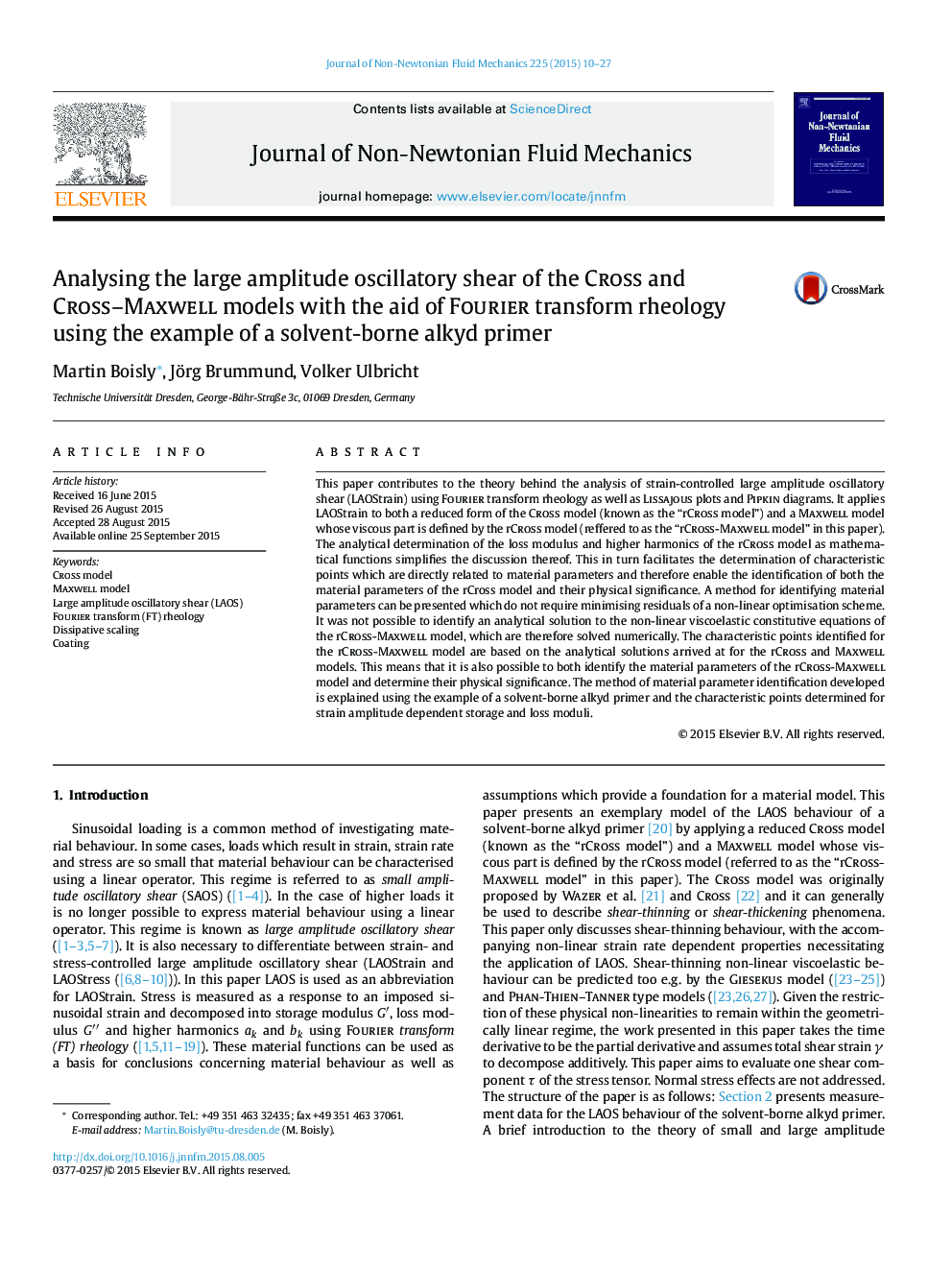| کد مقاله | کد نشریه | سال انتشار | مقاله انگلیسی | نسخه تمام متن |
|---|---|---|---|---|
| 670433 | 1459015 | 2015 | 18 صفحه PDF | دانلود رایگان |
• Storage and loss moduli as well as higher harmonics are calculated using FT-Rheology.
• We calculate harmonics of a reduced version of the Cross model analytically.
• Harmonics of a Maxwell model with reduced Cross viscosity are determined numerically.
• Characteristic points of harmonics are defined and related to material parameters.
• Material parameters of a coating can be identified without minimising residuals.
This paper contributes to the theory behind the analysis of strain-controlled large amplitude oscillatory shear (LAOStrain) using Fourier transform rheology as well as Lissajous plots and Pipkin diagrams. It applies LAOStrain to both a reduced form of the Cross model (known as the “rCross model”) and a Maxwell model whose viscous part is defined by the rCross model (reffered to as the “rCross-Maxwell model” in this paper). The analytical determination of the loss modulus and higher harmonics of the rCross model as mathema- tical functions simplifies the discussion thereof. This in turn facilitates the determination of characteristic points which are directly related to material parameters and therefore enable the identification of both the material parameters of the rCross model and their physical significance. A method for identifying material parameters can be presented which do not require minimising residuals of a non-linear optimisation scheme. It was not possible to identify an analytical solution to the non-linear viscoelastic constitutive equations of the rCross-Maxwell model, which are therefore solved numerically. The characteristic points identified for the rCross-Maxwell model are based on the analytical solutions arrived at for the rCross and Maxwell models. This means that it is also possible to both identify the material parameters of the rCross-Maxwell model and determine their physical significance. The method of material parameter identification developed is explained using the example of a solvent-borne alkyd primer and the characteristic points determined for strain amplitude dependent storage and loss moduli.
Figure optionsDownload as PowerPoint slide
Journal: Journal of Non-Newtonian Fluid Mechanics - Volume 225, November 2015, Pages 10–27
